- Home
- Tove Jansson
Sculptor's Daughter
Sculptor's Daughter Read online
Sculptor’s
Daughter
A CHILDHOOD MEMOIR
Tove Jansson
with an introduction by
Ali Smith
translated by
Kingsley Hart
Contents
Title Page
Introduction by Ali Smith
The Golden Calf
The Dark
The Stone
Parties
Annie
The Iceberg
The Bays
Flotsam and Jetsam
Albert
High Water
Jeremiah
Dressing Up
Pets and Females
The Spinster Who Had An Idea
The Tulle Skirt
Snow
German Measles
Flying
Christmas
A note on the photos
Also by Tove Jansson, published by Sort Of
Tove Jansson
Copyright
Introduction
by Ali Smith
A SMALL CHILD IS DIGGING A HOLE in one of the walls of the city apartment she lives in with her parents. It’s solitary work, but she’s already ‘got quite a long way … the wooden panelling went all right but then I had to use the marble hammer.’ Luckily her father is a sculptor so she has the tools to hand; in fact the hole she’s digging is in his studio wall.
She’s making a ‘secret tunnel’ in a story called The Dark, because danger, when you’re a child, ‘lies in wait everywhere.’ After you’re born pretty much everything is dangerous, the child announces at the end of this story, which begins with a nightmarish landscape – a too-gothic church, foul jagged rubbish glinting everywhere, locked doors, a house with no windows – and goes on to transform an innocent visit to the ice rink into ‘the worst thing of all’, a vision of existentialism in which ‘hundreds of shadowy figures skate round and round, all in the same direction, resolutely and pointlessly.’
The pile-up of terrifying images – not just dark ice and Scandinavian gloom, but snakes, monsters, a visit to the waxworks where ‘you can see how easy it is to smash people to pieces … crushed, torn in half or sawn into little bits’ – becomes grist to the mill in a piece which turns into a children’s game, funny and fast, moving at the speed of light and transforming danger into something exhilarating, the child ricocheting in near-euphoria between the joy and the fear of feeling anything at all.
But there’s something else, something other than this game, at the heart of it. Her father isn’t the only artist in the house, her mother is one, too; the child, descended from art, is hiding her escape tunnel behind a wall-hanging of a painting her mother made when she was young, of evening light in a wood, and when the child looks at this painting she knows that there’s an even more intense state of feeling possible, something more powerful than self-torture and frenetic destruction, more powerful even than going into hiding.
Everything except the sky has gone dark in a vague greyish brown but there are narrow red streaks that burn like fire. I love her picture. It goes deep into the wall, deeper than my hole … it goes on endlessly and one never gets to the place where the sun is setting but the red gets more and more intense. I’m sure it’s burning!
Art and life, light and dark, child’s play and deadly seriousness, hilarity and despair, creativity and existential cataclysm, and all of these oppositions held simultaneously and brought to work together: this is Tove Jansson territory. More, Sculptor’s Daughter, originally published in Finland as Bildhuggarens Dotter back in 1968, could be said to be closer to home for Tove Jansson than any of her other fictional works.
TOVE JANSSON WAS BORN in Helsinki in 1914 into an avowedly artistic family. Her father, Viktor Jansson, was a Finnish sculptor and her mother, Signe Hammarsten-Jansson, or Ham to her children, was Swedish, an illustrator, graphic designer and caricaturist, and a career woman who eventually designed Finnish postage stamps, watermarks and banknotes. For Ham, art was work and work was money, especially since there wasn’t much sure money in sculpture. Tove, born in July 1914 on the eve of the First World War, was a professional artist and writer herself as early as her mid-teens.
She began the first of the series of books for children that would make her internationally famous, the books about the Finn Family Moomintroll, in the middle of yet another war, publishing it in 1945; the story goes that she wrote and drew The Moomins and the Great Flood, a work centred on innocence and naivety, consciously to dispel some of the foulness, darkness and depression of the Second World War years.
The Moomins and the Great Flood, only very recently published in English for the first time, is a book of darkness, mud and storms, where a mother and child, travelling to find both a home and the family’s father, light their way with a tulip, find sun and hospitality and befriend many creatures on their journey. At one point they set sail using an armchair for a boat:
‘Go carefully!’ cried the small creature. He was sitting on the backrest and looking around, for it had occurred to him that they might find something valuable floating in the water after the flood. For example a casket full of jewels. Why not? He kept a sharp watch, and when he suddenly saw something gleaming in the water, he shouted loudly with excitement. ‘Go that way,’ he cried. ‘There’s something shining over there.’
It’s only an old bottle, not treasure at all, but of course there’s a message in it. One of Jansson’s own repeated messages-in-a-bottle to us over the course of a lifetime of art and writing – seven decades of work (she died in 2001), for people of all ages – is that there’ll always be treasure gleaming somewhere in what you salvage, and it’ll probably be unexpected.
The phrase ‘less is more’ might have been coined specifically for an aesthetic practice like Jansson’s. She was a consummate editor, a composer of prose so tightly disciplined that the end effect is somehow universal and cornucopic. In Jansson’s work, smallness, and attention to the smallest detail, most often leads her reader to something more like epic in understanding; and matters and practices in art and in prose are always, for her, related to matters of living and surviving. As the child puts it in the story called Flotsam and Jetsam in Sculptor’s Daughter, a story about all sorts of salvage and surprises as well as how to live communally and graciously in a wild and stormy world, ‘one mustn’t have a single unnecessary thing in a boat.’
SCULPTOR’S DAUGHTER WAS WRITTEN ten years after the death of Jansson’s father, when her mother was 86 (Ham died in 1970). By now Jansson was working towards what would be the last, the darkest and the wintriest of the Moomin books, Moominvalley in November. ‘I want to write something new,’ she told her partner, the graphic artist, Tuulikki Pietilä, ‘in fully adult mode yet about what is still a small world.’ Sculptor’s Daughter was the first of a dozen texts that Jansson would write specifically for adults rather than children, an important book in this transition for her, a threshold work; the next thirty years of her life would be devoted to fiction for adults.
Since the republication of her 1972 novel The Summer Book in the UK ten years ago, a steadily growing readership here has seen several of Tove’s works (and there are many more to come, which is tremendously exciting) become available in English, often for the first time. Each of these discoveries or rediscoveries is itself a sort of surprise, a fresh illumination of the quiet brilliance of Jansson’s aesthetic. Now, as we approach the centenary of her birth in 2014, Sculptor’s Daughter is back in print here for the first time in over forty years. It is the revelation of a classic.
Tove Jansson’s artwork for the original Swedish publication of Bildhuggarens Dotter (Sculptor’s Daughter), Schildts, 1968.
Though it is the most admittedly autobiogr
aphical of her books, Jansson, who ‘fought shy of biographies,’ all her life, would never herself have called it a memoir. Is it one? Strictly, no. But her books are always more than one thing (the only strictness she’s ever interested in as a writer is aesthetic, like the tightness of edit mentioned above) and, in the same way as her writing for children can be read with an adult philosophical eye, allowing, in books written primarily for children, the child and the adult to co-exist, Sculptor’s Daughter is versatile. One of the things it goes out of its way to do is to return child consciousness and child logic to the adult state, complete with the wisdom of aftermath and experience. It might also be said to function as an aesthetic primer; it teaches its reader, both primally and with sophistication, about art and the uses of art, it is all about art’s own versatility. Most of all, it is a calibrated work of art, of the imagination, in itself.
In it, a sculptor father who treats his studio and his work as sacrosanct (and expects everybody round him to) sculpts alongside an artist mother who works exceptionally hard, mostly for money (‘like in town when drawing was done at night and made you so tired that you felt sick’). The child inherits both modes, the mother’s disciplined practicality and the father’s more ceremonial theatricality.
The collection examines art and competitiveness in a world where the worst insult is the word amateur. ‘You’re not a real artist!’ the child shouts at a woman she’s jealous of. ‘You’re nobody’s surprise!’ There’s a lesson in how to focus: ‘you can close your mind to things if something is important enough. It works very well. You make yourself very small, shut your eyes tight and say a big word over and over again until you’re safe’ (The Stone). There’s a lesson in how art can protect: ‘I captured this cruel thing on paper so that it couldn’t get at me’ (The Dark). There’s a lesson in how to draw a forest, in The Bays, a story about our responsibility towards the landscapes we inhabit – a story in which child becomes landscape and landscape becomes child, time disappears and the telling of stories allows the imagination space and the space we inhabit its own wild imagination: ‘That was a good story – Another one.’
Safety is a grave matter in Sculptor’s Daughter, where the telling of stories is more than just an act of pleasure, it’s a ritual connected with warmth, security and home. There are rules everywhere; part of the joy of the book is in the following of them but a large part is in the breaking of them, the acceptance of natural wildness: ‘it was marvellous! The grass was under water, the sea was rising all the time, and the storm and the night made the whole landscape look quite different.’
One of the sources of power throughout is Jansson’s effortless-seeming ventriloquism, her delivery of the child’s voice, a device as clear as water, or perhaps as magnifying and altering (and as deceptive when it comes to true depth) as looking through clear water. Voice throughout Sculptor’s Daughter is an amalgam of formal and informal, a fusion of innocence and irony in the parroting of the parents’ practicality and theatricality; it inhabits both the past tense and the present in a multiconsciousness of both which is only the beginnings of its skilled implication. It is never sentimental. It can reveal in a throwaway comment – like ‘women always forgot to shut doors after them,’ or Females ‘are asocial and wouldn’t even obey orders during a war’ – what’s routinely said, what’s acceptable and what’s expected, as well as what’s not being said, what can’t be said and what’s undercurrent in everything that’s said.
Jansson’s use of form is also deceptive, and masterfully subtle. The collection apes simplicity, looks at the outset to be a series of haphazardly organized childhood vignettes. On a closer look, each of its stories is a piece of discrete virtuoso; this is a book full of stories, each separately so good, so expertly judged that this would be more than enough; but best and quietest of all (and Jansson is a master of the quietness of form) each one is unexpectedly the source of what comes after it, each one blooms unforeseeably out of the one before. A word or phrase casually used in one will be the germ or seed for the next. It’s almost invisible, as a formal device, only there if you really look. A mention of a grandmother hiding things under a skirt in The Spinster Who Had An Idea is followed by a full-blown, under-the-skirt story, The Tulle Skirt, where the child hides herself under one and looks out through it at the apartment as a dramatic new world. A throwaway moment in The Tulle Skirt, the image of an open window which happens to let a casual, pretty drift of snow fall on the apartment floor, gives way to Snow, a story where the child and her mother survive in a house under deep snow – a story about how stories connect us, and how a sharing of stories is the opposite of solitariness. The book is a masterpiece of this formal lightness of touch, and of an undercurrent connectivity. And, as the child knows, in art ‘making a whole is very important. Some people just paint things and forget the whole’ (Parties).
THERE ARE REAL PEOPLE here in these stories. Real things that happened to Tove Jansson and her family pass through them all: she really did sleep in a bunk high up on a shelf; her father really did have a pet monkey; her mother really did work that hard; and they really did spend summers on an island and winters in the city. Work colleagues and artist friends of her parents flit in quick-footed cameos through the text. Perhaps most delightfully of all it’s interesting to know that the small drippy-nosed child called Poyu, who also loves to be tormented by fear in that story called The Dark, grew up in real life to become the Sibelius expert Erik Tawaststjerna.
‘Sculptor’s Daughter is indeed about my childhood,’ Jansson wrote to Tordis Orjasaeter, who was compiling a sort-of biography (it was for teenagers, which is why Jansson agreed to let her) in 1983, ‘but naturally a certain amount has been added.’ Take the story that opens the collection. In The Golden Calf, Jansson wrote to Orjasaeter, ‘everything really happened except the calf.’ But as the title itself suggests, the calf – the invention by which means she departs from autobiographical truth – is the whole point.
The story makes its subject – authority – biblically clear from the start (and it’s the opening of the book, too, which suggests that authority, and generation, will be important concepts in the collection):
Grandfather was a clergyman and used to preach to the King. Once, before his children and his children’s children and his children’s children’s children covered the face of the earth, Grandfather came to a long field which was surrounded by forests and hills so that it looked like Paradise.
Here in this place strung between the past and the future, God looks ‘just like Grandfather’, rather than the other way round, and fertility is a matter of such authority, since if Grandfather even deigns to point at a plant, ‘it was blessed and grew until it groaned under its own weight.’ It’s a story of the groaning in the growing, then – both comic and real.
The child and her mother (there’s no mention of a father in this opening story) have come to stay ‘in the West Room, which also had white furniture and peaceful pictures but no sculpture’. So the first mention of sculpture in a book called Sculptor’s Daughter is of its absence. This child of something absent, from somewhere else, finds herself helplessly placed in competition almost as soon as she exists, up against another grandchild who has the advantage of being pretty and having naturally curly hair. They go round in a holier-than-thou competitiveness, trying to get God’s attention. ‘We raised our voices in the wilderness and were continually disobedient because God so likes to forgive sinners.’ When Karin, the other grandchild, gets ahead in the game, the child decides to do the worst, most blasphemous and pagan thing she can think of. ‘It was then that I made the golden calf.’ She makes her first sculpture, then she waits for God to be furious and ‘show that he knew that I existed.’ Her grandmother comes out, looks at the calf, decides the child has been playing a pretty game and calls the sculpture ‘God’s little lamb.’ The child is disgusted, both with life and with herself.
In this very funny story about how we make, react to and disrupt authorities, the
act of art becomes charged with power, then with failure. This is what the sculptor’s daughter will be up against – the misjudgements and preconceptions, the misinterpretations, the age-old entrenched beliefs, traditions and authorities, the inevitable failures and competitions and the games you have to play – in the course of the childhood, the course of the book. The rights and wrongs, not just of art but of existence, are its real subject. ‘What is right and what is wrong is a very sensitive matter,’ as she says elsewhere in a collection whose title foregrounds the child’s gender but whose stories never once refer to it, a collection in which there’s a core of stories at the centre specifically about what it means, in this world, to be female. Sculptor’s Daughter acts as an implicit (and sometimes quite explicit, unexpectedly blatant) critique. The child state, she reminds us, is refreshingly free from preconception – as well as a sponge for it, something that alarmingly absorbs it. From story to story we see the closedness of preconception and the child, unknowing, up against it.
Unknowing? ‘I know. I know a lot that I don’t talk about.’ For instance, the war, especially the Finnish Civil War of 1918, which arose out of the turmoil of the First World War, runs like a dark and near-unspoken undercurrent through these stories much as it did through the child Tove’s early years of life; her father Viktor returned from the fighting, only thirty-two, a young but much darkened man, according to Boel Westin’s biography of Tove Jansson.
So the story called Parties, ostensibly a charming and funny look at drunken social evenings, but really an analysis of art and hospitality as sources of reparation, has at the heart of it a violence and an unspeakable pain; and the opening story, The Golden Calf, is, in autobiographical terms, about real absence, the time Jansson and her mother spent in Sweden with her mother’s parents when she was very small and her father was at war.

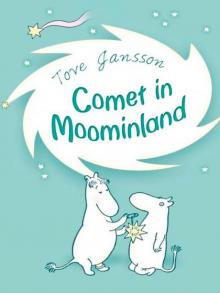 Comet in Moominland
Comet in Moominland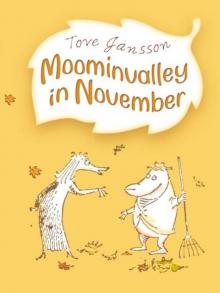 Moominvalley in November
Moominvalley in November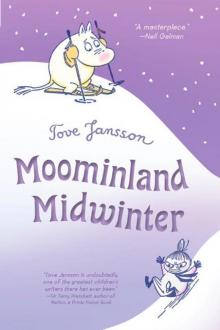 Moominland Midwinter
Moominland Midwinter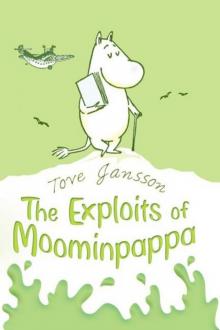 Moominpappa's Memoirs
Moominpappa's Memoirs Sculptor's Daughter
Sculptor's Daughter The Listener
The Listener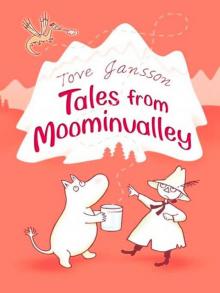 Tales From Moominvalley
Tales From Moominvalley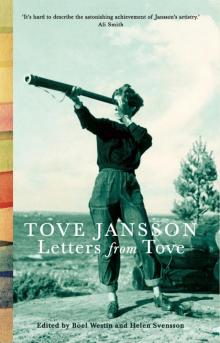 Letters from Tove
Letters from Tove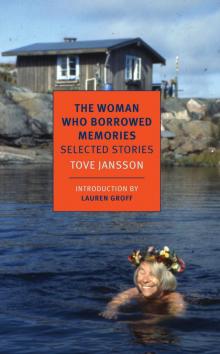 The Woman Who Borrowed Memories: Selected Stories
The Woman Who Borrowed Memories: Selected Stories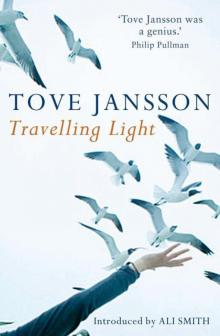 Travelling Light
Travelling Light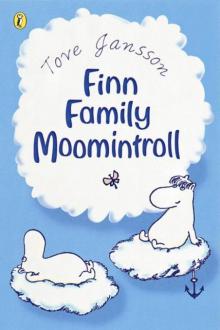 Finn Family Moomintroll
Finn Family Moomintroll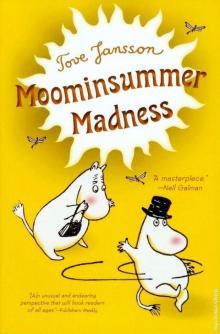 Moominsummer Madness
Moominsummer Madness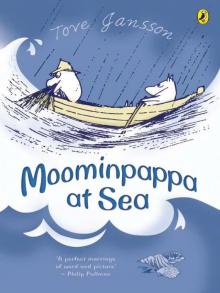 Moominpappa at Sea
Moominpappa at Sea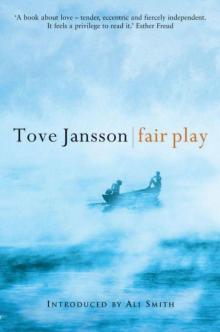 Fair Play
Fair Play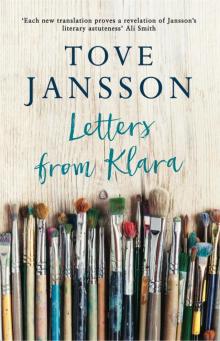 Letters From Klara
Letters From Klara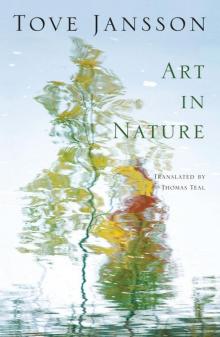 Art in Nature
Art in Nature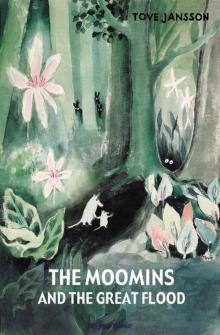 The Moomins and the Great Flood
The Moomins and the Great Flood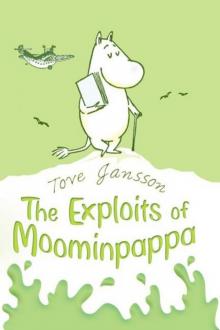 The Exploits of Moominpappa
The Exploits of Moominpappa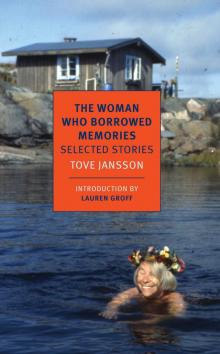 The Woman Who Borrowed Memories
The Woman Who Borrowed Memories